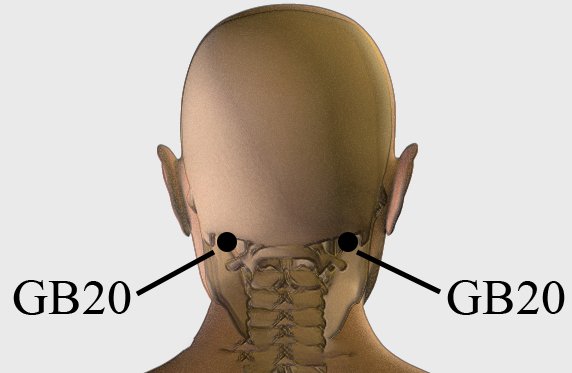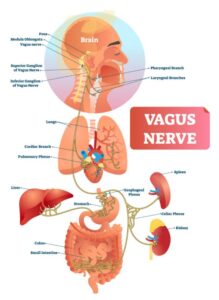If you’re struggling with dizziness or vertigo, acupressure may offer relief. Here’s the quick answer before we dive deeper.
KEY TAKEAWAYS
Does acupressure help vertigo?
Yes, acupressure may ease vertigo by stimulating pressure points that affect balance and circulation.
Which pressure points are best for vertigo?
The three most common are TW17 (behind the ear), GB20 (base of the skull), and P6 (inner wrist).
Is acupressure a cure for vertigo?
No, but it may reduce dizziness, nausea, and imbalance for some patients.
Vertigo is a disorder that affects balance. It produces a sensation of movement even though there is none occurring. Patients with vertigo usually feel like the world is spinning around them. They may experience nausea, vomiting and dizziness. If you’re suffering from vertigo, you may want to give acupressure for vertigo and dizziness relief a try.
What Is Acupressure and How Does It Help Vertigo?
Acupressure, a therapy from Traditional Chinese Medicine (TCM), involves pressing acupuncture points to stimulate energy flow and restore balance. It is often used to reduce dizziness, vertigo, and nausea (according to an International Journal of Surgery Open 2025 study). It is similar to acupuncture, but instead of needles, the fingers are used to work the point. It’s normal to experience a slight pain when the proper acupuncture point is pressed.
How Can Massage and Acupressure Relieve Vertigo Symptoms?
Acupressure can be very effective in numerous ways, one of those ways includes reducing vertigo symptoms naturally by stimulating specific pressure points located on various parts of the body. There are a few different points in particular that could help relieve dizziness and vertigo when considering acupressure for vertigo relief.

Which acupressure point is TW17 (Triple Warmer 17)?
The TW17 acupoint, also known as Triple Warmer 17, is located in the hollow directly behind the ear lobe. In Traditional Chinese Medicine, it is commonly used to relieve vertigo (according to a 2024 PubMed study), ear-related imbalance, and dizziness.
How to use TW17 for vertigo relief:
- Locate the indentation just behind your ear lobe.
- Place your thumb, knuckle, or fingertip in the hollow.
- Apply steady, firm pressure (slightly uncomfortable but not painful).
- Hold for 1–2 minutes on each side of the head.
FAQ: TW17 Pressure Point
How long should I hold the TW17 point for vertigo relief?
Hold steady pressure for 1–2 minutes on each side. Some people feel immediate dizziness relief, while others may need to repeat several times per day.
Can pressing TW17 cause side effects?
TW17 is generally safe, though pressing too hard can cause temporary soreness. If you feel pain, ease up on the pressure.

Which acupressure point is GB20 (Gall Bladder 20)?
The GB20 acupoint, or Gall Bladder 20, sits in the soft hollows at the base of the skull where the neck muscles meet. It is used in both chiropractic care and Chinese medicine to relieve vertigo, dizziness, headaches, and neck tension.
How to use GB20 for vertigo relief:
- Place your thumbs in the soft hollows just below the base of the skull.
- Apply firm, steady pressure for about 30 seconds.
- Optionally, massage the area in a gentle circular motion.
- Repeat as needed, keeping your shoulders relaxed.
FAQ: GB20 Pressure Point
How often can I use GB20 for vertigo?
You can press or massage GB20 a few times daily as needed. It’s often used to reduce dizziness, headaches, and neck stiffness.
Is GB20 safe during pregnancy?
Light pressure is typically safe, but pregnant women should consult a doctor before using GB20 or any acupressure points on the neck.

Which acupressure point is P6 (Pericardium 6)?
The P6 acupoint, also called Pericardium 6 or Neiguan, is located on the inner forearm about one inch below the wrist crease, between two tendons. Widely studied in both Western medicine and TCM, it is used to relieve nausea, dizziness, and vertigo (according to a 2024 PubMed study).
How to use P6 for vertigo relief:
- Hold your palm facing upward.
- Place three fingers across your wrist, just below the palm, to locate the spot.
- Press your thumb into the hollow between the two tendons.
- Apply gentle, steady pressure for 30 seconds.
- Switch to the other wrist and repeat.
FAQ: P6 Pressure Point
Does the P6 pressure point really help with nausea and dizziness?
Yes. P6, also called Neiguan, is widely used in Traditional Chinese Medicine and supported by studies for reducing nausea, dizziness, and vertigo.
Can I use P6 acupressure every day?
Yes. Gentle pressure on P6 can be used daily or as needed. Many people also wear acupressure wristbands that stimulate this same point.
These are just a few acupressure points that may help relieve your vertigo, though there are others that exist.
Do Acupressure Bands Really Help with Vertigo?
Acupressure wristbands, also known as sea bands, apply continuous pressure to the P6 acupoint and are marketed for motion sickness and vertigo relief.
There isn’t much more than anecdotal evidence to prove that acupressure bands for vertigo can help to reduce vertigo and dizziness-related symptoms. These bracelets are targeted specifically at getting rid of nausea caused by vertigo, by applying pressure to the point used in acupressure to rid oneself of nausea.
When Should You See a Professional for Vertigo?
If acupressure and home remedies don’t provide relief, professional care may be necessary. A chiropractor, vestibular specialist, or ENT doctor can evaluate causes such as BPPV, spinal misalignment, or inner ear disorders.
If these acupressure tips still haven’t done the trick, I also offer a free 5 step guide to getting out of the vertigo spins.
At Align Wellness Center, we’ve seen great results in helping people to manage their vertigo without drugs, or surgery. There are many things we offer that can help you get back to living a vertigo-free life. If you want to see if we can help you, feel free to give us a call, and if you or someone you know is experiencing vertigo, be sure to share this with them.
Align Wellness Center proudly serves patients across Northbrook, Glenview, Skokie, Highland Park, and Chicago’s North Shore. Our team specializes in gentle, corrective chiropractic care and vestibular rehabilitation designed to help you find lasting relief from dizziness and vertigo.
We have helped thousands of people to restore alignment within their body and eliminate their vertigo for good. If you haven’t had your spine looked at by a corrective chiropractor, your vertigo could be caused by this.
We offer an in-depth exam to determine exactly what we can do to help with as much detail for you as possible. It is called the 3-Dimensional BioStructural Analysis, and the process involves the following:
- Timeline history
- Digital posture exam
- 3-Dimensional posture exam
- Chiropractic, Neurological, and Physical Exam
- Spinal radiographs (if needed)
- Digital biomechanical analysis of your spine
- Insurance verification (by our insurance team)
- Separate time to go over the results of your test within a day or two, where we will go over:
- What is going on
- If we can help
- What the best next step is for you
- Any investment in your health that is necessary
If you’re interested, you can schedule an appointment for a 3-Dimensional BioStructural Analysis. If you’d like more tips on acupressure for vertigo or how you can stay healthy and well without drugs and surgery, go ahead and check out other articles on this site. If you continue to struggle with vertigo and dizziness, give us a call at Align Wellness Center 847-564-9500 or schedule an appointment online. Contact us today or stop by the office. We’re located at 900 Skokie Blvd., Suite 113, Northbrook, IL, 60062.
Frequently Asked Questions About Acupressure for Vertigo
Which pressure point relieves vertigo the fastest?
The TW17 acupressure point, located just behind the ear lobe, is one of the most commonly used points for quick vertigo relief. Applying firm, steady pressure for 1–2 minutes can help reduce dizziness. Some people also find relief using GB20 at the base of the skull or P6 on the inner wrist.
Is acupressure safe for vertigo during pregnancy?
Acupressure is generally considered safe in pregnancy when applied gently, especially at points like P6 for nausea and dizziness. However, some pressure points are traditionally avoided in late pregnancy, so it’s best to consult a qualified practitioner or healthcare provider before trying acupressure while pregnant.
How long does it take for acupressure to work for dizziness?
Relief can happen within a few minutes for some people, especially when pressing points like TW17 or GB20. Others may need to repeat the technique a few times throughout the day. Results vary depending on the cause of vertigo, and consistent practice often provides the best outcome.
Can acupressure cure vertigo permanently?
Acupressure is not a permanent cure for vertigo. Instead, it’s a self-care method that may temporarily ease dizziness, nausea, or imbalance. Long-term vertigo relief often requires addressing the underlying cause, such as BPPV, vestibular disorders, or spinal misalignments. A healthcare provider can help diagnose and recommend the right treatment plan.
Do acupressure wristbands really help with vertigo?
Acupressure wristbands target the P6 pressure point on the inner wrist, which is most often used to reduce nausea. Some people report symptom relief for dizziness and vertigo, though scientific evidence is limited. They may be worth trying as a non-invasive option, especially for travel or motion-related symptoms.





